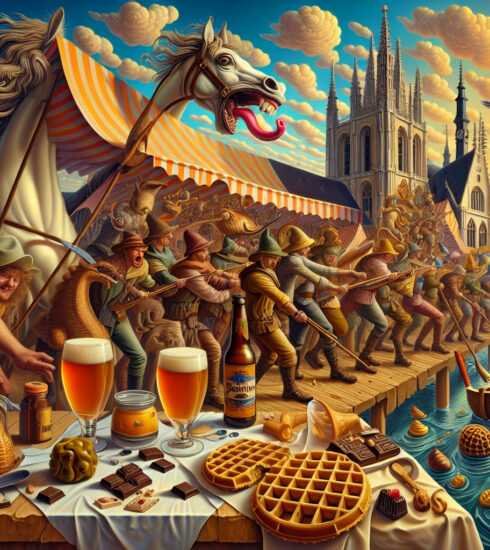Unveiling the Kaleidoscope of Belgian Surrealism: An Inside Look at the Fascinating Article
Merging Realities: Unveiling the Kaleidoscope of Belgian Surrealism
Belgian surrealism is a fascinating artistic movement that emerged in the first half of the 20th century, capturing the imaginations of artists and art enthusiasts around the world. Known for its dreamlike and irrational qualities, Belgian surrealism has left an indelible mark on the art world, pushing the boundaries of creativity and challenging traditional artistic conventions.
The Birth of Belgian Surrealism
Belgian surrealism was heavily influenced by the broader surrealist movement that originated in Paris in the 1920s. While Belgian artists shared a similar fascination with dreams, the subconscious, and the irrational, they also brought their unique perspectives and artistic approaches to the movement.
One of the key figures in Belgian surrealism was René Magritte, whose work challenged the viewer’s perception of reality. His famous painting “The Treachery of Images” featuring a pipe with the caption “Ceci n’est pas une pipe” (This is not a pipe) became an iconic representation of the movement.
Other influential Belgian surrealists include Paul Delvaux, whose eerie and atmospheric paintings often depicted nude women in mysterious landscapes, and Marcel Broodthaers, whose work combined elements of poetry, film, and visual art to explore themes of language and communication.
The Themes and Motifs of Belgian Surrealism
Belgian surrealism explores a wide range of themes and motifs, often using dreamlike imagery and unexpected juxtapositions to create a sense of the uncanny. Here are some of the prominent themes and motifs in Belgian surrealism:
1. Dreams and the Subconscious: Belgian surrealists were fascinated by the world of dreams and the subconscious mind. They sought to capture the surreal quality of dreams and explore the hidden depths of the psyche through their artwork.
2. Surreal Landscapes: Many Belgian surrealists depicted landscapes that seemed to exist outside of normal reality. These landscapes often merged elements of nature and architecture, creating fantastical and otherworldly settings.
3. Everyday Objects in Unusual Contexts: Belgian surrealists often placed everyday objects in unexpected and unsettling contexts, challenging the viewer’s perception of reality. This technique was used to evoke a sense of unease and provoke deeper contemplation.
4. Disrupted Narratives: Belgian surrealism often disrupted the traditional narrative structure, creating fragmented and non-linear compositions. This fragmentation reflected the chaotic and irrational nature of dreams and the subconscious.

5. Symbolism: Symbolism played a significant role in Belgian surrealism, with artists using symbols to convey hidden meanings and psychological depth. These symbols were often personal and open to interpretation, inviting the viewer to delve deeper into the artwork’s meaning.
The Impact of Belgian Surrealism
Belgian surrealism had a profound impact on the art world, influencing subsequent generations of artists and continuing to captivate audiences to this day. Here are some of the ways in which Belgian surrealism has left its mark:
1. Pushing the Boundaries of Artistic Expression: Belgian surrealism pushed the boundaries of artistic expression, challenging traditional artistic conventions and exploring new techniques. By embracing the irrational and the subconscious, Belgian surrealists opened up new possibilities for artistic experimentation.
2. Influence on Pop Culture: The surreal and dreamlike qualities of Belgian surrealism have had a lasting impact on popular culture. Surrealist imagery can be seen in films, music videos, and advertisements, often invoking a sense of mystery and intrigue.
3. Conceptual Art: Belgian surrealism paved the way for the development of conceptual art, which emphasized ideas and concepts over traditional art objects. Artists like Marcel Broodthaers blurred the boundaries between different art forms, exploring the relationship between language, image, and meaning.
4. Belgian Surrealism Today: Belgian surrealism continues to inspire and captivate artists and art enthusiasts around the world. Museums and galleries dedicated to surrealism, such as the Museum of Modern and Contemporary Art in Liège, showcase the works of Belgian surrealists and provide a platform for contemporary artists working in the surrealist tradition.
Whether it’s the enigmatic paintings of René Magritte or the atmospheric landscapes of Paul Delvaux, Belgian surrealism offers a kaleidoscope of artistic visions that challenge our perception of reality. By merging the conscious and the unconscious, Belgian surrealists created a unique artistic language that continues to captivate audiences and influence the art world to this day.




